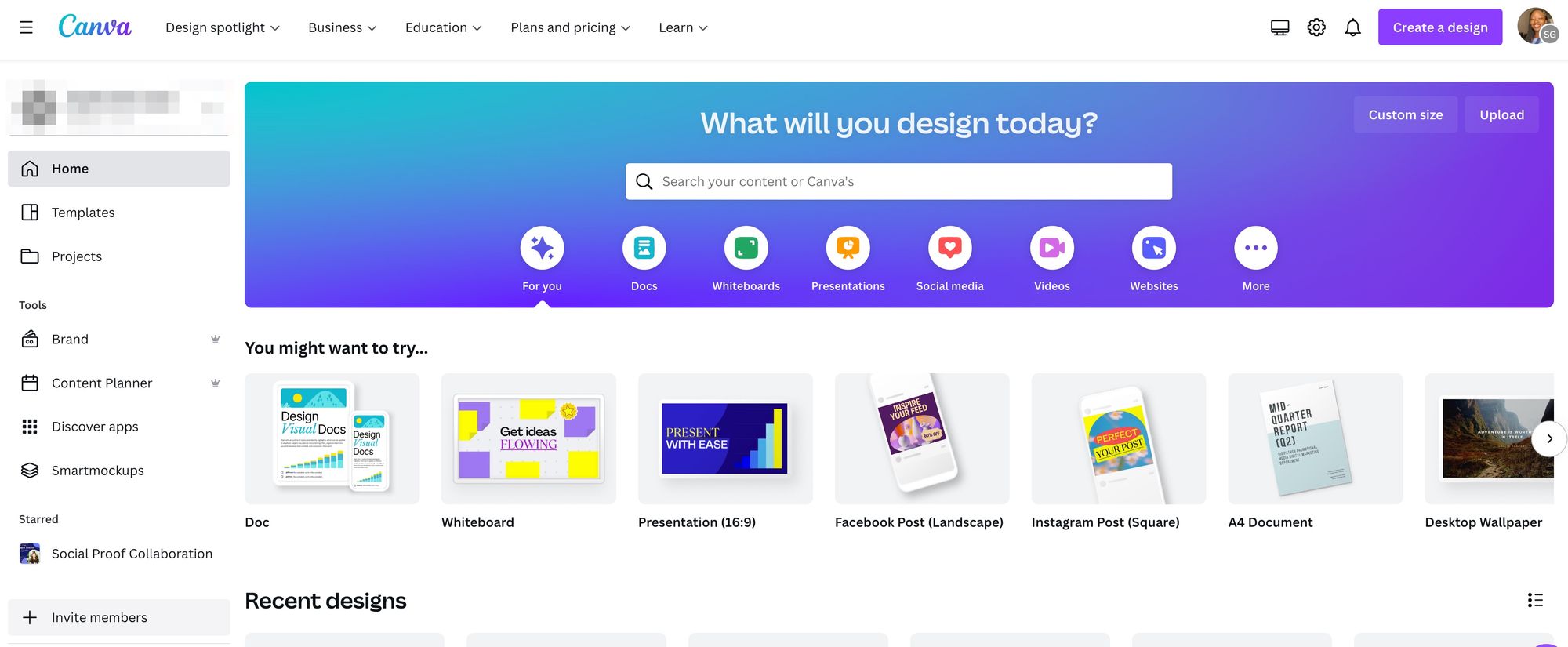Discovering the Power of Visual Content Creation
Visual content creation has become an essential aspect of digital marketing, with businesses and organizations recognizing the importance of high-quality visuals in capturing audience attention and conveying their message. The demand for professional-grade visual content has led to the rise of graphic design platforms like Canva, which has democratized access to design tools and made it possible for individuals to create stunning visuals without extensive design experience.
Canva’s user-friendly interface and vast template library have made it an ideal platform for non-designers and professionals alike to create a wide range of visual content, from social media graphics and presentations to infographics and marketing materials. With Canva, users can tap into the power of visual content creation to elevate their brand, communicate their message, and drive engagement.
As the demand for visual content continues to grow, the opportunities for making money on Canva are expanding. Whether you’re a seasoned designer or a beginner, Canva provides a platform to monetize your design skills and turn your creativity into a lucrative business. By leveraging Canva’s features and tools, you can create and sell pre-made templates, offer design services, and even create and sell online courses teaching Canva skills.
For those looking to capitalize on the growing demand for visual content, Canva offers a unique opportunity to turn their passion into a profitable venture. With the right skills and knowledge, you can unlock the earning potential of Canva and start building a successful business. In this article, we’ll explore the various ways to make money on Canva and provide tips and strategies for getting started.
Monetizing Your Design Skills on Canva
Canva offers a range of opportunities for designers to monetize their skills and turn their passion into a profitable business. One of the most popular ways to make money on Canva is by selling pre-made templates. With millions of users searching for templates on Canva, creating and selling high-quality templates can be a lucrative business. To get started, designers can research popular design trends and create templates that cater to in-demand niches.
Another way to monetize design skills on Canva is by offering design services. Canva’s design services feature allows designers to offer customized design solutions to clients, from logo creation to social media graphics. To attract clients, designers can build a strong portfolio showcasing their work and provide excellent customer service to build a reputation. By leveraging Canva’s design services feature, designers can tap into the growing demand for visual content and build a successful business.
Creating and selling online courses teaching Canva skills is another way to monetize design expertise. With the rise of online learning, there is a growing demand for courses teaching graphic design skills, including Canva. Designers can create comprehensive courses covering various aspects of Canva, from basic design principles to advanced techniques. By marketing their courses effectively, designers can reach a wider audience and generate passive income.
For those looking to learn how to make money on Canva, it’s essential to understand the various opportunities available. By selling pre-made templates, offering design services, and creating and selling online courses, designers can turn their passion into a profitable business. In the next section, we’ll explore the tips and strategies for building a successful Canva template business.
https://www.youtube.com/watch?v=0lr61BObhCs
Building a Successful Canva Template Business
Creating a successful Canva template business requires a combination of design skills, market research, and optimization techniques. To get started, designers should research popular design trends and identify in-demand niches. This can be done by analyzing Canva’s template marketplace, social media, and design blogs to see what types of templates are currently popular.
Once a niche has been identified, designers can create high-quality templates that cater to that niche. Using high-quality images, fonts, and graphics is essential for creating templates that stand out from the competition. Designers should also optimize their templates for search by using relevant keywords, descriptions, and tags.
Another key factor in building a successful Canva template business is to create a consistent brand identity. This can be achieved by using a consistent design style, color palette, and typography across all templates. Designers should also ensure that their templates are easy to use and customize, making it simple for customers to create professional-grade visual content.
To increase visibility and sales, designers can participate in Canva’s template marketplace, where they can sell their templates to a vast audience. Designers can also promote their templates on social media, design blogs, and other online platforms to reach a wider audience.
By following these tips and strategies, designers can build a successful Canva template business and start earning money on Canva. In the next section, we’ll explore how to leverage Canva’s design services feature to attract clients and offer customized design solutions.
Leveraging Canva’s Design Services to Attract Clients
Canva’s design services feature provides a platform for designers to offer customized design solutions to clients. To attract clients, designers should build a strong portfolio showcasing their work and provide excellent customer service to build a reputation. A strong portfolio should include a variety of designs that demonstrate the designer’s skills and versatility.
When offering design services, designers should clearly communicate their process and what clients can expect from their services. This includes providing a detailed description of the design process, timelines, and pricing. Designers should also be responsive to client inquiries and provide regular updates on the design project.
Canva’s design services feature also allows designers to offer additional services, such as branding and marketing materials, to clients. By offering these additional services, designers can increase their earning potential and provide more value to their clients.
To find clients, designers can utilize Canva’s design services marketplace, where they can showcase their portfolio and services to a vast audience. Designers can also promote their services on social media, design blogs, and other online platforms to reach a wider audience.
By leveraging Canva’s design services feature, designers can attract clients and offer customized design solutions that meet their needs. In the next section, we’ll explore the process of creating and selling online courses teaching Canva skills.
Creating and Selling Online Courses on Canva
Creating and selling online courses teaching Canva skills is a lucrative way to monetize your design expertise and share your knowledge with others. To get started, you need to identify your target audience and create engaging course content that meets their needs. This can include beginners who want to learn the basics of Canva, intermediate designers who want to improve their skills, or advanced designers who want to learn specialized techniques.
When creating your course content, focus on providing practical, hands-on training that students can apply to their own projects. Use a combination of video tutorials, written instructions, and downloadable resources to make your course comprehensive and engaging. You can also include quizzes, assessments, and feedback mechanisms to help students track their progress and stay motivated.
Once you’ve created your course content, you need to market it effectively to attract students. Use social media platforms, online advertising, and email marketing to reach your target audience and promote your course. You can also partner with other designers, influencers, or online course platforms to expand your reach and credibility.
When selling your online course, use a pricing strategy that reflects the value you’re providing to students. Consider offering different pricing tiers, discounts, or promotions to incentivize sales and attract more students. You can also use Canva’s built-in features, such as the Canva Design School, to host and sell your course.
By creating and selling online courses teaching Canva skills, you can establish yourself as an expert in your field, build a loyal following, and generate passive income. In the next section, we’ll explore tips and strategies for marketing your Canva services and products.
Marketing Your Canva Services and Products
Marketing your Canva services and products is crucial to attracting clients and customers. One effective way to market your services is by utilizing social media platforms, such as Instagram, Facebook, and Twitter. Share your designs, provide tips and tutorials, and engage with your audience to build a loyal following.
Collaborating with influencers and other designers can also help you reach a wider audience and build credibility. Partner with influencers in your niche to promote your services and products, and collaborate with other designers to create exclusive content and promotions.
Running targeted ads on social media and Google can also help you reach your target audience and drive traffic to your Canva shop or website. Use relevant keywords, such as “Canva templates” or “Canva design services,” to target your ads and ensure that they reach the right people.
Another effective way to market your Canva services and products is by offering free resources and tutorials. Create a blog or YouTube channel where you share tips and tutorials on how to use Canva, and offer free templates and design assets to attract potential clients and customers.
By marketing your Canva services and products effectively, you can attract more clients and customers, increase your sales and revenue, and build a successful business. In the next section, we’ll explore how to optimize your Canva shop for maximum sales.
Optimizing Your Canva Shop for Maximum Sales
Optimizing your Canva shop listings is crucial to maximizing sales and revenue. One of the most important factors to consider is using relevant keywords in your product titles, descriptions, and tags. This will help your products appear in search results and attract more customers.
Creating eye-catching thumbnails is also essential to grabbing the attention of potential customers. Use high-quality images that showcase your products in the best possible light, and make sure they are optimized for different devices and screen sizes.
Writing compelling product descriptions is also crucial to converting visitors into customers. Use clear and concise language to describe the features and benefits of your products, and make sure to include any relevant details such as file formats, dimensions, and customization options.
Another important factor to consider is pricing. Make sure to research your competition and price your products competitively, while also ensuring that you are making a profit. You can also offer discounts, promotions, and bundles to incentivize sales and attract more customers.
By optimizing your Canva shop listings, you can increase your visibility, attract more customers, and maximize your sales and revenue. In the next section, we’ll discuss strategies for scaling your Canva business for long-term success.
Scaling Your Canva Business for Long-Term Success
Scaling a Canva business requires a strategic approach to growth and development. One key strategy is to outsource tasks that take up too much time or require specialized skills. This can include tasks such as customer support, bookkeeping, or social media management.
Building a team of skilled designers and marketers can also help to scale a Canva business. This can include hiring freelancers or full-time employees, depending on the needs of the business. By building a team, you can increase your capacity to take on more clients and projects, and provide a higher level of service to your customers.
Continuously improving design skills and offerings is also crucial to scaling a Canva business. This can include staying up-to-date with the latest design trends and technologies, and expanding your services to include new areas such as video production or web design.
Another important strategy for scaling a Canva business is to focus on customer retention and satisfaction. This can include providing excellent customer service, offering loyalty programs or discounts, and continuously gathering feedback to improve your services and products.
By implementing these strategies, you can scale your Canva business for long-term success and achieve your goals. Remember to stay focused on your target market, continuously improve your skills and offerings, and provide excellent customer service to build a loyal customer base.






